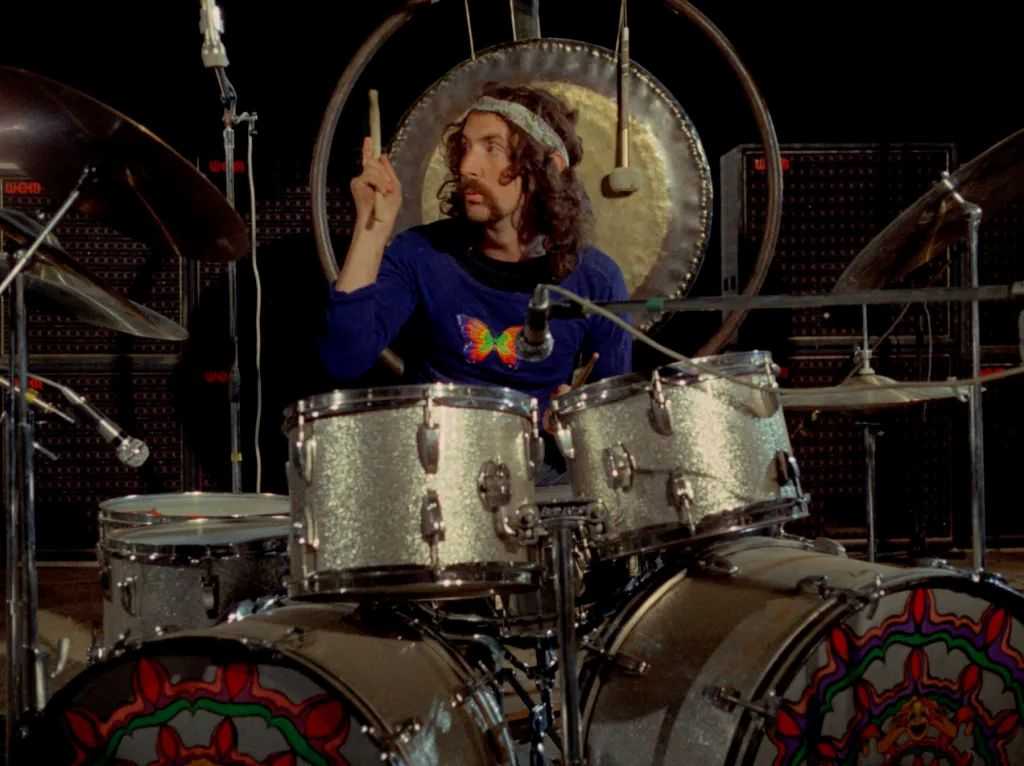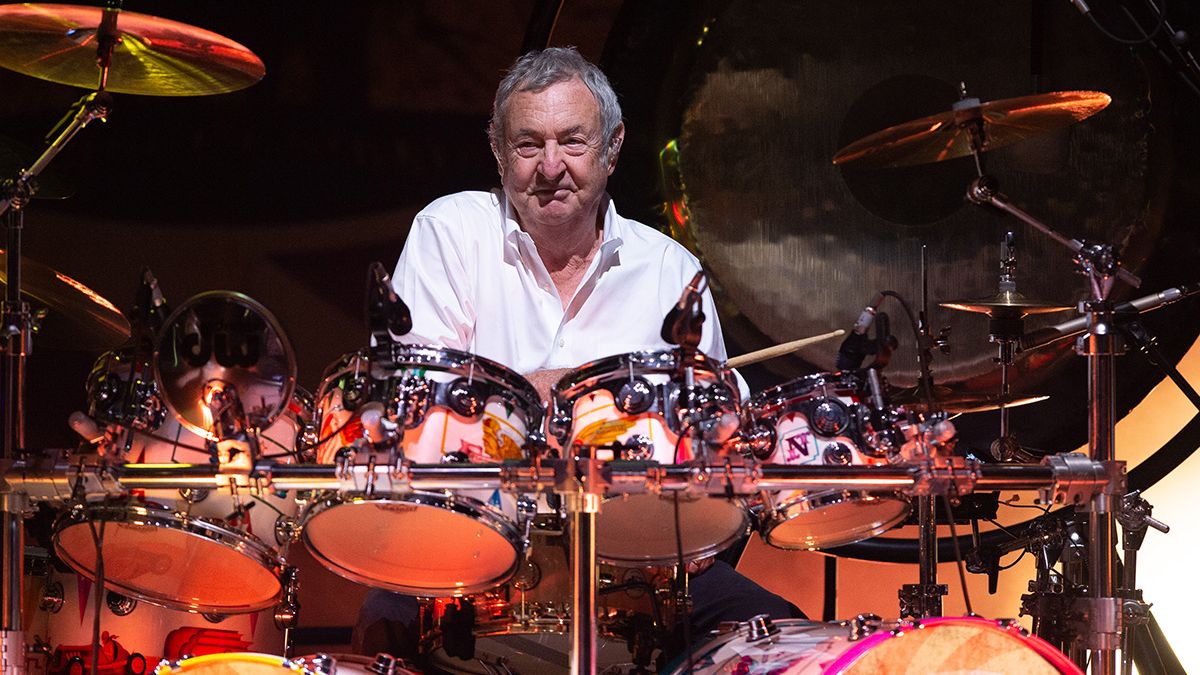Artists
Echoes of the Drum: The Life and Legacy of Nick Mason

When people speak of Pink Floyd, they often mention the poetic anguish of Roger Waters, the haunting guitar of David Gilmour, or the otherworldly keys of Richard Wright. But quietly—and consistently—behind the surreal soundscapes and concept albums stands Nick Mason, the band’s only constant member and rhythmic foundation.
A drummer not known for explosive solos or technical showmanship, Mason built his legacy through atmosphere, subtlety, and feel. His approach wasn’t to dominate the music, but to serve it, to shape it, to give space for the band’s experimental vision to breathe. From the chaotic psychedelia of the 1960s to the conceptual epics of the ’70s and beyond, Mason’s drumming became an integral part of Pink Floyd’s identity.
This is the story of Nick Mason—a man whose drums didn’t just keep time but created it, who helped redefine what rock drumming could be, and who continues to inspire generations of musicians from behind the kit.
Early Life and Musical Awakening
Born on January 27, 1944, in Birmingham, England, Nicholas Berkeley Mason grew up in the well-to-do environment of Hampstead, London. His father, Bill Mason, was a documentary filmmaker, and his household fostered creativity and curiosity. But it was not a film that would call to young Nick—it was rhythm.
As a child, he was drawn to jazz records and the percussive playfulness of drummers like Art Blakey and Max Roach. Yet it wasn’t until he began studying architecture at the Regent Street Polytechnic in the early 1960s that music would move from fascination to vocation. There he met Roger Waters, Richard Wright, and Bob Klose—and together, they started to form the nucleus of what would become Pink Floyd.
The Birth of Pink Floyd
The band evolved quickly from its roots as Sigma 6 into the psychedelic underground icons of London’s UFO Club. With the addition of Syd Barrett, their sound took on a wild, unpredictable shape.
Mason’s early playing—heard on The Piper at the Gates of Dawn (1967)—was loose, experimental, and full of character. He often played with mallets, incorporated non-traditional percussion, and embraced the strange. While Barrett’s guitar work soared and shimmered, Mason gave it a tribal, almost ritualistic grounding.
The Sound Architect: Drumming Style and Evolution
Nick Mason’s style defies flashy stereotypes. His playing is:
- Textural, not aggressive: He builds layers rather than breaks through them.
- Rhythmic sculptor: Think of his iconic rototom intro on “Time”—not just a beat, but a statement.
- Emotionally attuned: His fills rise and fall with the arc of the song rather than with ego.
- A master of space: In “Set the Controls for the Heart of the Sun,” he lets silence carry weight.
He was especially vital in albums like Meddle (1971) and The Dark Side of the Moon (1973), where the band matured into sonic architects. Mason’s work on “Echoes” and “Any Colour You Like” shows a drummer attuned to the composition, not just the clock.
The Floyd Years: From Dark Side to The Wall
Pink Floyd’s ascent in the ’70s saw Mason adapting to ever more ambitious concepts:
- The Dark Side of the Moon (1973): Precision and polish—his rototom work became iconic.
- Wish You Were Here (1975): Subdued and sorrowful, supporting Gilmour’s guitar with grace.
- Animals (1977): A heavier, more aggressive side of Mason surfaces, particularly on “Dogs.”
- The Wall (1979): Tension in the band led to parts being ghost-drummed by Jeff Porcaro (Toto), but Mason remained integral in shaping the theatrical feel of songs like “Mother” and “In the Flesh?”
As band relationships fractured, Mason maintained a reputation as the diplomat, often caught in the crossfire between Waters and Gilmour.
Life Beyond the Wall: Solo Work and New Directions
While Floyd entered a long period of creative dormancy after The Final Cut (1983), Mason explored new avenues:
- Nick Mason’s Fictitious Sports (1981): A jazz-rock solo effort featuring Carla Bley and Robert Wyatt.
- He contributed to other artists’ recordings and film scores.
- Mason remained involved as Pink Floyd returned without Waters on A Momentary Lapse of Reason (1987) and The Division Bell (1994), and he appeared on their final studio album, The Endless River (2014).
Reviving the Early Days: Saucerful of Secrets
In 2018, Mason surprised fans by returning to the stage—not with another reunion attempt, but with a new band, Nick Mason’s Saucerful of Secrets. Rather than performing Floyd’s most famous material, the band revived their pre–Dark Side catalogue, showcasing the psychedelic experimentation that first defined them.
Performing songs like “Astronomy Domine” and “Interstellar Overdrive,” Mason reminded the world that the roots of Pink Floyd were wild, unpredictable, and fearless—just like his early drumming.
Legacy: The Pulse That Endures
Nick Mason is often called the “quiet Floyd”—never as outspoken as Waters or as iconic as Gilmour. But his contribution is just as enduring. He is:
- The only member to play on every Pink Floyd album.
- A drummer whose restraint and atmosphere helped redefine rock drumming.
- A respected author and custodian of Pink Floyd’s legacy.
- An advocate for artistic integrity over spectacle.
He influenced generations of musicians by showing that sometimes, less is more, and that a drumbeat can be a whisper rather than a war cry.
Nick Mason didn’t just keep time—he shaped it. He was never the loudest in the room, but his presence was always felt. His drumming helped take rock into realms of philosophy, dream, and soundscape. In a genre often filled with egos and excess, Mason stands as a model of artistic humility, consistency, and creativity.
As long as there are echoes of Pink Floyd, there will be echoes of Nick Mason‘s drums—subtle, pulsing, and eternal.


